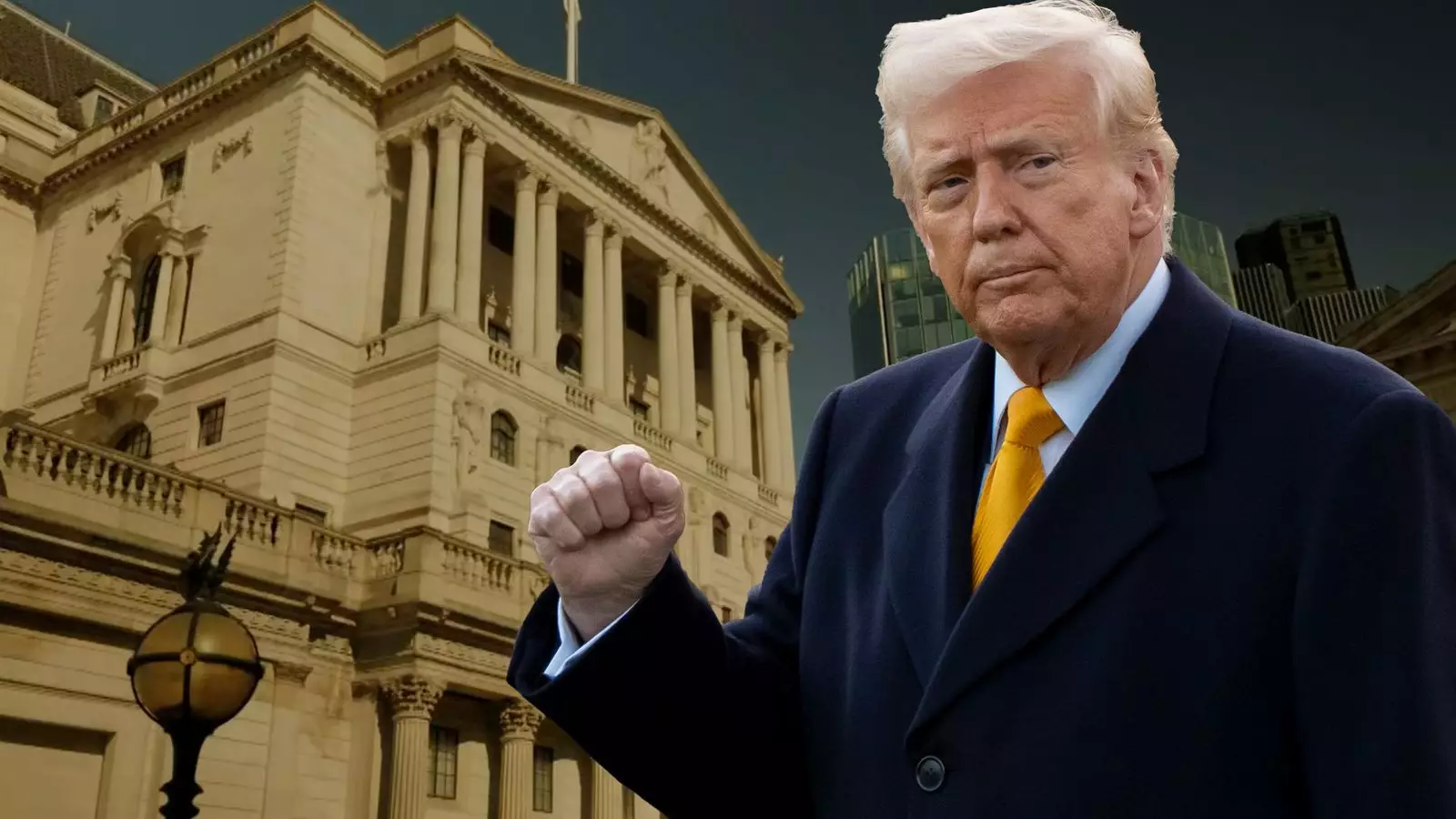The financial landscape is swirling with uncertainty as the Bank of England inches closer to a potential interest rate cut. Recent data indicates a staggering 100% likelihood of a reduction next month, much of which can be attributed to the fallout from Donald Trump’s unpredictable trade war. The markets are not simply speculating; they are reacting to the implications of global economic strife—the so-called “Trump Effect.” Investors are not only fretting about immediate inflationary pressures but are also swamped by the multifaceted repercussions of geopolitical tensions. This has led to financial analysts oscillating between optimism and sheer panic, a volatile mix that taints decision-making processes.
Megan Greene’s recent commentary adds fuel to the disinflationary rhetoric, gathering a chorus of skeptics on one hand and cautious supporters on the other. Greene’s stance portrays the UK’s current lack of retaliatory tariffs as an avenue for cheaper imports from Asia and Europe—at least until uncertainty surfaces anew. However, while her viewpoint offers a glimmer of hope for manageable inflation, it feels overly optimistic in an environment fraught with unpredictability. Price stability may yet elude us, and we find ourselves at the mercy of external forces conspiring against our economic revival.
The Currency Conundrum
A secondary layer to this complex narrative is the recent vigor of the pound against the dollar. While a stronger currency typically signifies a healthy economy, it can conversely hinder export competitiveness—an intrinsic component for growth. Greene’s acknowledgment of the currency’s potential for easing inflation raises important questions about the sustainability of such a sweet deal. Is this strength merely a fleeting illusion, one that leaves British producers struggling against global competition? It’s indeed early days, but one can’t help but feel an undercurrent of caution. The spectre of rising energy prices juxtaposed with anticipated tax hikes creates a daunting battleground that could very well lead us into a quagmire.
Rising inflation may inhibit the Bank’s maneuverability, especially when considering that rate cuts are often a lifeline extended to stimulate stumbling economies. Yet, it’s key to question the wisdom of pursuing such cuts in an era marked by complex trade dynamics—an approach aided and abetted by a volatile relationship with a president fixated on tariffs. Although the markets show buoyancy around the possibility of imminent rate reductions, one must ponder: Are we grasping for a band-aid solution in the wake of a trade war that feels interminable?
The International Ripple Effect
The looming specter of trade disputes is not solely a UK problem; it reverberates throughout the global economy. The eurozone, grappling with its sluggish performance, has taken a more aggressive stance on rate cuts, attempting to reinvigorate its own faltering economic landscape. Yet the specter of inflation still plays a haunting note. The Federal Reserve’s operational hesitance seems to mirror that of the Bank of England’s, resulting in a synchronized, albeit cautious, approach toward monetary policy—much to the chagrin of figures like President Trump, who openly lambasts the Fed for a perceived lack of action.
Such discontent illustrates a profound disconnect between political aspirations and economic realities. When leaders prioritize short-term gains over sustained growth, they risk damaging the very fabric of trust upon which markets operate. Trump’s direct threats to the Fed chair highlight a troubling trend: the politicization of financial institutions. The notion that external pressures can manipulate monetary policy threatens to undermine not just the central banks’ credibility but also the wider economic framework.
Rachel Reeves’ Dilemma
Meanwhile, Chancellor Rachel Reeves finds herself in the thick of diplomatic complexities, traversing Washington in pursuit of trade discussions that may alleviate some tariff-induced burdens. While such engagements are undeniably crucial, they harbor an inherent risk of becoming another hollow promise overshadowed by the entangled dynamics of nationalism and globalism. Reeves’ urgency for economic growth is palpable but embedded in a reality where international relations dictate the pace of local progress.
However, it’s worth considering: does the potential for a rate cut genuinely equate to a boon for struggling economies? Are we comforting ourselves with the illusion of policy solutions while ignoring a broader malaise? Rates may cut, but real recovery demands far more than merely tinkering with numbers. We need to anchor our hopes with sound policies and engage in meaningful trade agreements that reflect a balanced, equitable approach. Hence, as we tread these uncertain waters laden with inflationary and disinflationary forces, it’s essential to retain both vigilance and clarity on what our real economic goals must be.


Leave a Reply